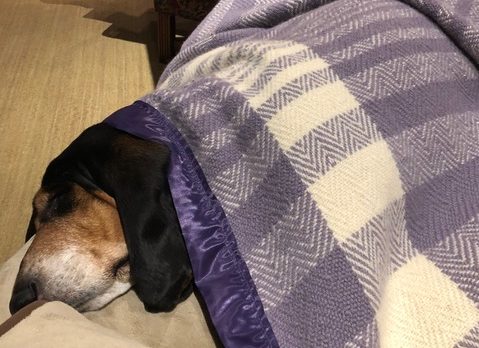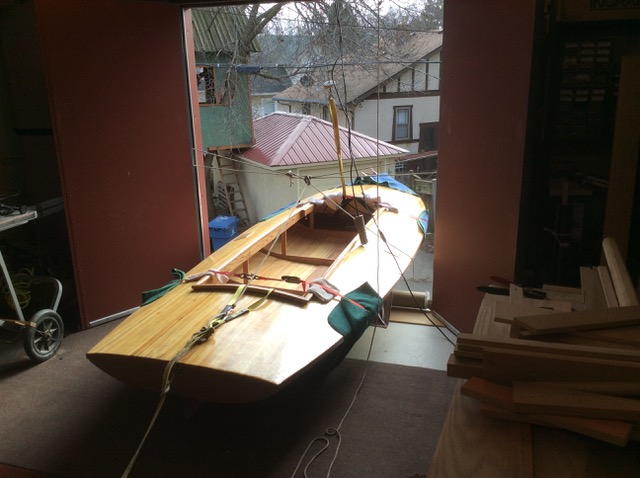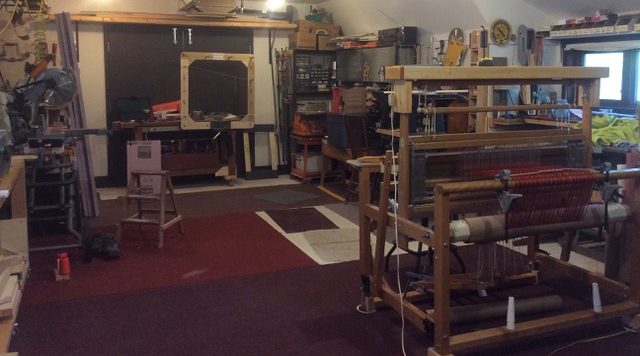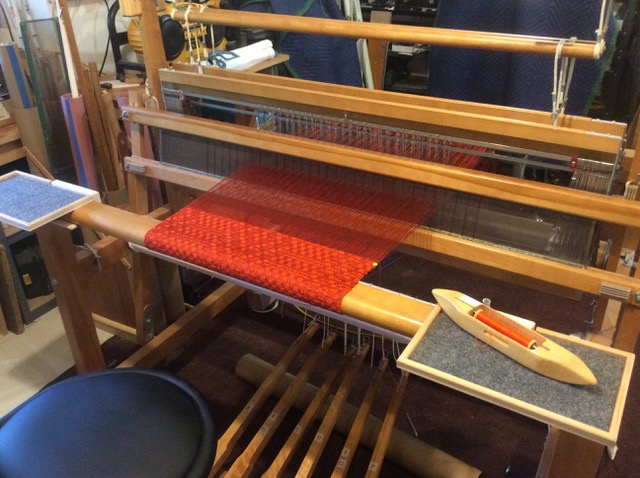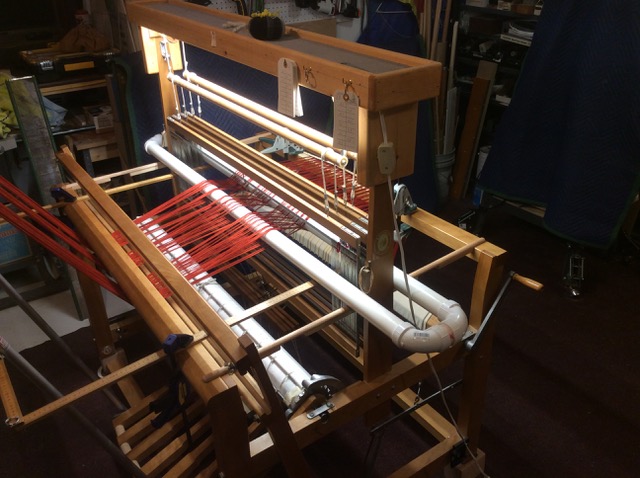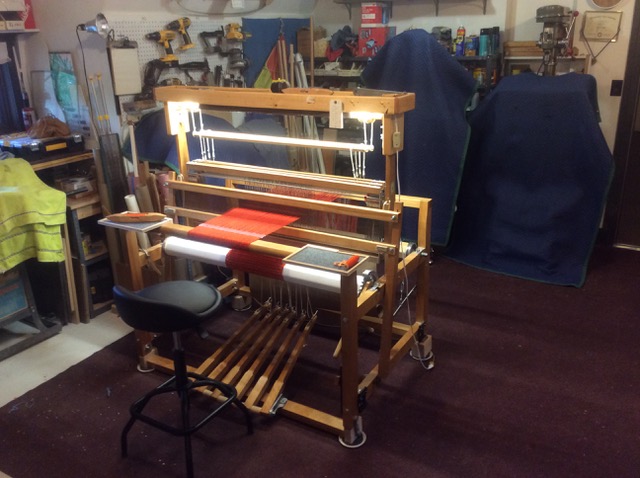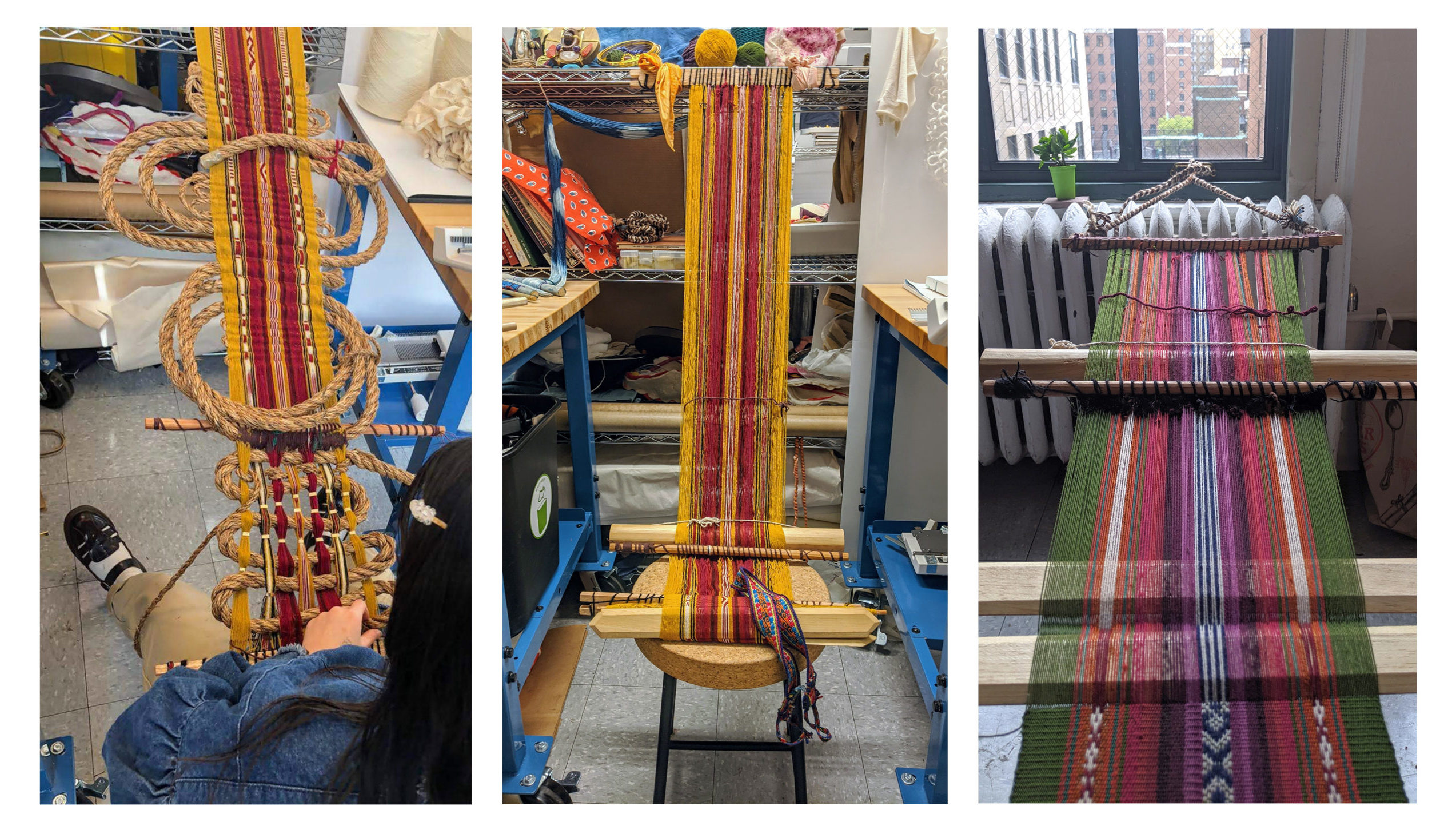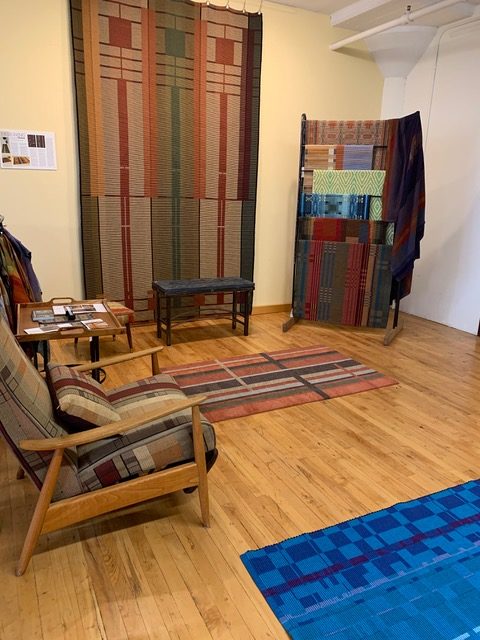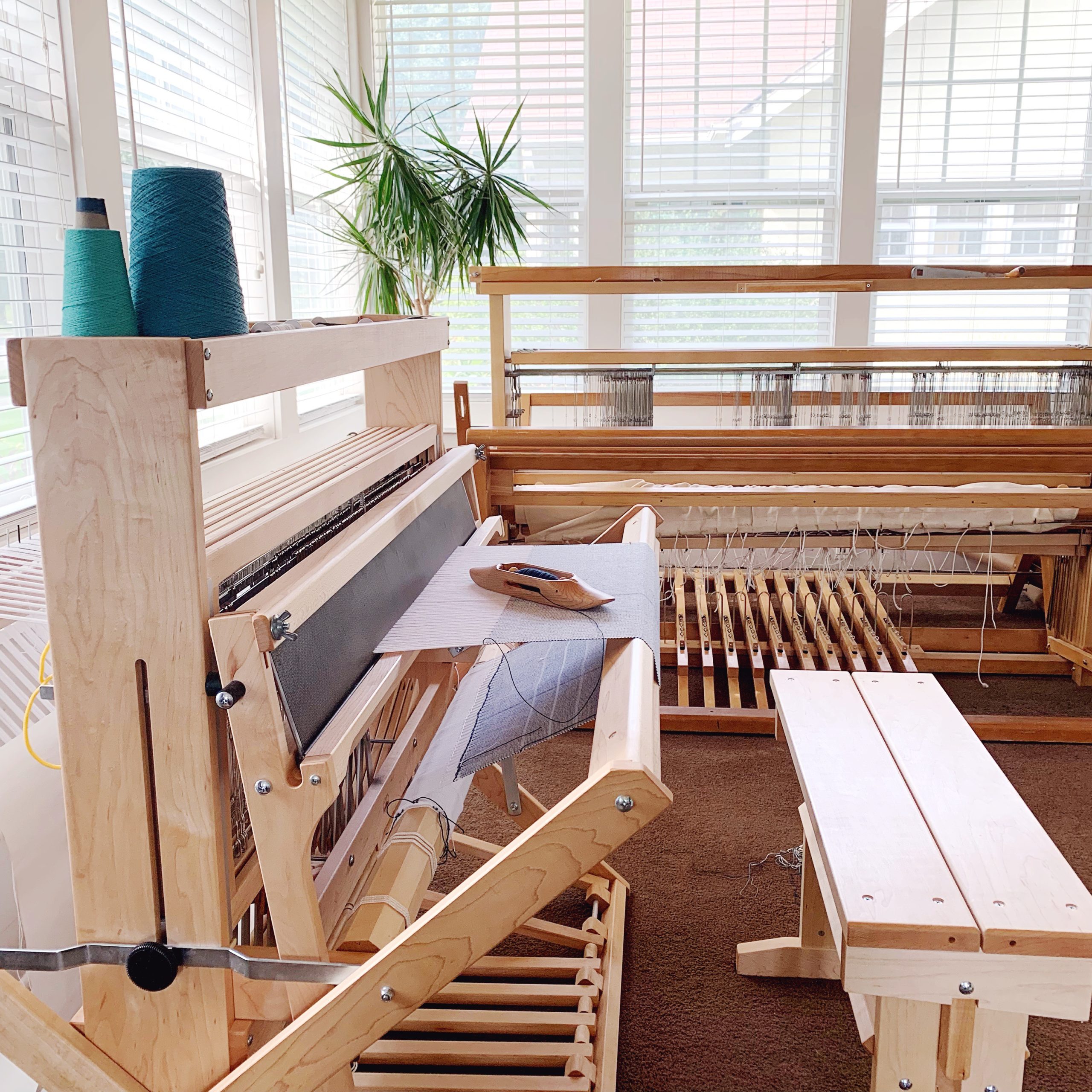This week we’re having a look at the studio of WGM member Dan Breva. In addition to weaving, Dan is a woodworker, a story his studio tells!
WGM: Tell us about yourself and your practice? When did you start to weave?
DB: I’m relatively new to weaving. I started a little over 3 years ago when my wife, Barbara, bought me a rigid heddle loom at the Weavers Guild. I’m not sure why, but it was intriguing right from the start. After working on the loom and often referring to the book we purchased with it, the results were acceptable to me. I then took a class at the Weaver’s Guild and learned an amazing amount, both how to do it and what to avoid. The resulting efforts were significantly better than the first ones. I now have 3 different looms. The great things about the weaving classes is how they open up the actual process of weaving to include so much creativity in the design, materials and colors. I’m still working at getting my head around all the possibilities. I would like to especially thank Kala Exworthy, Donna Hanson, Karin Knudsen, Betsy Konop, and Arlene Monk, for their knowledge freely shared, advice and ideas that have improved many of my projects, and for their patience. Problem solving and encouragement seem to be the ethic at the Guild. I’ve really missed those interactions since the pandemic hit.
WGM: Where do you Weave? What is your studio like? What do you cherish about this space?
DB: The studio is in what was initially a 16’ x 26’ woodworking shop. It’s above our garage and is accessible from the house without going outside. Since it was originally designed for woodworking, it is wide open and has a double-door opening to the outside.
It even includes a powered winch to raise and lower materials and equipment. The area was large enough to build a 14-foot sailboat. Bringing the 45” loom into the area was very easy. Even with the woodworking equipment in place, there’s still a 14’ x 20 clear space where I can set up the loom. When I make furniture or other wood projects, I cover the looms with sheets and moving quilts to keep the dust off.
I like the space as its bright, open, and easy to rearrange for the task at hand. I keep all three looms (45” floor loom, 22” table loom, and the rigid heddle loom) accessible. The two small looms are mounted on stands for easy movement. I can even weave on the table loom while standing.
WGM: Tell us about your tools and equipment. What kind of loom do you use? What are you favorite tools to use?
The floor loom is a 45” Leclerc Fanny II counterbalance. I purchased it used from a WGM member and it was in great shape.
I use the usual tools while weaving, but I have made some accessories for the loom mostly for my convenience. I use an adjustable bar stool while weaving and I wanted something to set the shuttles and other tools on, so I made a couple of small 8” x 10” removable tables that slip on to the breast beam.
I had problems keeping the cross from tangling while warping, especially with wool, so I tried some plastic water pipe I had in the shop and the tangling disappeared. These water pipe lease sticks are probably my favorite tool! I still use regular lease sticks when I thread the heddles. I built a removable castle for the loom. I made it removable so a future owner won’t have a loom full of holes or nuts and bolts. The castle is lighted so it creates a nice bright work area both in front of and behind the heddle frames. The additional light helps when threading the heddles, sleying the reed, and keeps the shed well lit.
The latest change I made to the loom was to increase the space between the breast beam and the treadle spreader and I increased the space between the treadles. I was constantly maneuvering my legs while treadling due to the short space between the treadles and the fabric take-up bar. I lowered the treadle frame spreader and at the same time spaced the treadles further apart. For a Bigfoot like me, treadling is much easier.
I’ve developed a process for keeping track of where I am while weaving patterns that have more than 8 or 10 different pics. I note the treadling for 8 to 10 shots on a hangtag and hang these on the castle. When these shots are completed, I flip to the next card. When a pattern has 40 or more pics, the pattern sequence is difficult to remember, so the cards help. And, if I get diverted unexpectedly, it’s easier to retrace my last few shots and avoid a real mess.
WGM: What inspires you to weave?
I don’t need much to get me weaving. If I see something in a book or magazine that interests me, I start thinking about it and how a pattern, or colors or the end product might look. When that seems to come together, I start the project and once the loom is warped, I love to see the fabric appear. Once the rhythm of the weft sequence is established, it almost becomes meditative. I can watch the pattern develop and repeat while thinking about many other things. The weaving process becomes background, but never automatic. There are too many variables to consider throughout the weaving process for it to become an automatic or mindless activity.
I don’t weave for any economic reasons, but I like to gift projects to family and friends. Most of my projects are practical in nature, but the aesthetics of color and texture is playing a larger role as I continue weaving. Luckily, my wife is a good source of help and advice. Her fashion sense far exceeds mine.
Hopefully, there will be a return to near normality in 2021! We’ll adapt and thrive. I hope to return to the State Fair Creative Crafts Demos in 2021!

